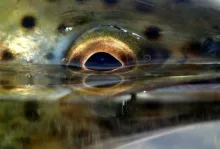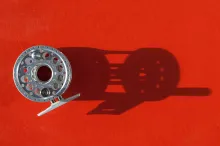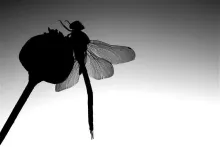I'm pretty delighted with this book. Delighted with the fact that it's a book, which combines two of my main interests: fishing and photography.
Image gallery for FisheyeUpdated or edited 2 months ago
I'm pretty delighted with this book.
Delighted with the fact that it's a book, which combines two of my main interests: fishing and photography.
Delighted that it features hundreds of really excellent pictures.
Delighted that it has a ton of great advice on shooting anglers, fish, fishing situations and landscapes.
This is a book I have been waiting for for a long time. I have actually started writing a book along the same lines many years ago - my first sketches date back at least 10 years - but I never finished it as a book, but let individual chapters sneak out as articles here on GFF. Producing books is hard work and expensive too, so my scribbles never made it to a real book.
But this is a real book, and as you know I do love books.
It's large format, hardcover, 200 pages and chuck full of great fishing pictures. Even though it's not fly-fishing only, but all sorts of fishing, I find it a joy to leaf through its pages, savoring the excellent photography, be it of fly-fishing, coarse fishing or sea fishing. There are some really beautiful and fascinating images in the book, and Matt Hayes comments on each and every one, describing what makes it work (or not) and in most instances how it was shot.
The book deals mainly with photography and not much with gear and technicalities. We do get a photo kit rundown, but a very general one with few deatails. The author runs into the same problem as many articles and books on photography does: trying to avoid being too technical and gear specific makes the technical information a little superficial and a little useless in my eyes. I also find it unnecessary. When people get to a stage in their photo career where they buy books specifically on fishing photography, they must be expected to know their way around the photo gear, and I think you can go two ways: very detailed and advanced or not at all. Teach the advanced photographers something they don't know and something that's really useful for outdoors and fishing photography.Leave it to basic books on photography to teach basic gear choice and settings. Explaining that an SLR cameras are "the cameras that sport a detachable lens" seems way too basic for the potential reader of this book. When the book later covers exotic items such as fisheye and tilt/shift lenses, explaining what an SLR is seems a bit useless.
Also recommending a specific compact camera brand and model seems futile. The camera mentioned has already been replaced by a newer model, and in a few years it will most likely be considered a bit outdated as it happens with most cameras just a few years after their introduction.
I have some nice photography books that are 30-40 years old, and the best ones still range on my list of favorites. All of them are characterized by the fact that they don't recommend gear, but give general advice, which in most cases is almost as useful today as the day it was written.
But no matter what I am still pretty delighted with this book.
I'm also slightly annoyed.
Annoyed by the fact that everything - including the text - is printed on black.
I know that many photographers love to see their images printed on black, and I see many web sites with black backgrounds. People seem to think that it makes the images pop. In my opinion there's only one place where images should appear on black, and that's when they are viewed in darkness on a screen via a projector.
Images in books can go on a black, but why does the text have to be white on black? White text on a black background is hard to read, and when the printing isn't consistent, which is the case in my copy of this book, it's even worse. Some pages are close to illegible because of the black being printed so densely that the letters almost disappear. I have a really good reading sight, read fast and read a lot, and still I get tired reading white on black.
I prefer and recommend white background and black text any time - also in photography books. Good images should easily have sufficient impact to stand out when printed on a white background.
I have also found a few typos, which is hard to avoid when doing books (been there, done that), but when they result in a 50mm f/2.8 being better and cheaper than a kit zoom, it's really annoying, and really confusing for beginners. I guess it should have been an f/1.8, but it slipped through the proof reading.
And these images would easily do on a white background. Matt Hayes is an excellent photographer and there's a lot of umph! in his pictures.
Skip the specific gear stuff, concentrate on the general techniques related to fishing scenes and subjects, proof read, and print on white, and I'll be in photo and fishing book heaven. Right now I'm just delighted.
Great to see a book on this subject!
If you are into photography and fishing photography in particular, this is worth looking into.
- Log in to post comments







